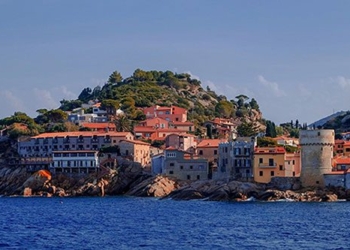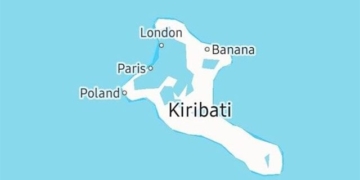Boudhanath Stupa in Nepal is the largest spherical stupa in the world, constructed according to the structure of a mandala. The stupa is surrounded by residential areas from all over.
Hidden away from the dust and hustle of the capital city of Kathmandu, Boudhanath Stupa in the northeastern suburbs of the city symbolizes the spirituality, culture, and heritage of the nation. Also known as Boudha, it is one of the largest and most sacred Tibetan Buddhist sites outside Tibet, attracting pilgrims, tourists, and Buddhists from around the globe.
In 1979, Boudhanath Stupa was recognized as a UNESCO World Heritage Site. With numerous monasteries surrounding it, Boudhanath serves as the center of Tibetan Buddhism in Nepal. The stupa once stood on the ancient trade route to Tibet, where Tibetan merchants rested and prayed for centuries.
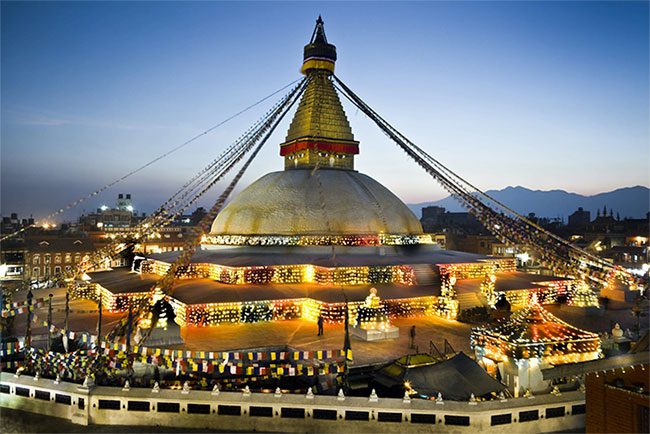
Panorama of Boudhanath Stupa at night.
The earthquake in April 2015 caused significant damage to the stupa. Reconstruction began on November 3, 2015, led by the Boudhanath Development Committee, alongside funds raised by Buddhist groups and volunteers. Prime Minister Pushpa Kamal Dahal officially inaugurated the newly reconstructed stupa on November 22, 2016.
According to historians, Boudhanath was built by the Licchavi king of Nepal, Sivadeva (590 – 604 CE), but other chronicles of Nepal suggest it was constructed during the reign of King Manadeva (464 – 505 CE), a time when the influence of Buddhism began to take root in the Kathmandu Valley. It is also believed that Boudhanath was built shortly after the Buddha’s death.
Symbolic Architecture
As a spherical structure standing 36 meters tall and with a diameter of 120 meters, Boudhanath Stupa resembles a mandala, a geometric structure representing the universe in the symbols of Hinduism and Buddhism. Boudhanath is also rich in symbolism as every part of the stupa carries a specific meaning:
- Mandala Structure: Symbolizes the reminder of the path to enlightenment of the Buddha.
- Three-tiered base: Represents the Earth, and also symbolizes the Three Jewels: the Buddha, the Dharma, and the Sangha. The base of Boudhanath is adorned with 108 images of Amitabha Buddha, symbolizing the 108 worldly desires that one must overcome to achieve enlightenment. The stupa is also surrounded by a brick wall with 147 niches, each containing a Buddha statue and inscribed with mantras.
- Dome: Represents the universe or a treasure vase. The treasure vase is one of the eight auspicious symbols in Mahayana Buddhism, also known as the “Auspicious Eight Treasures.”
- Square Tower (harmika): Symbolizes the Noble Eightfold Path – the right path divided into eight aspects, a fundamental teaching mentioned in the Four Noble Truths. The Eightfold Path includes Right View, Right Intention, Right Speech, Right Action, Right Livelihood, Right Effort, Right Mindfulness, and Right Concentration.
- Spire: Represents Nirvana. It is also believed to symbolize the number 1 in Nepali script, representing unity and the singular path to enlightenment.
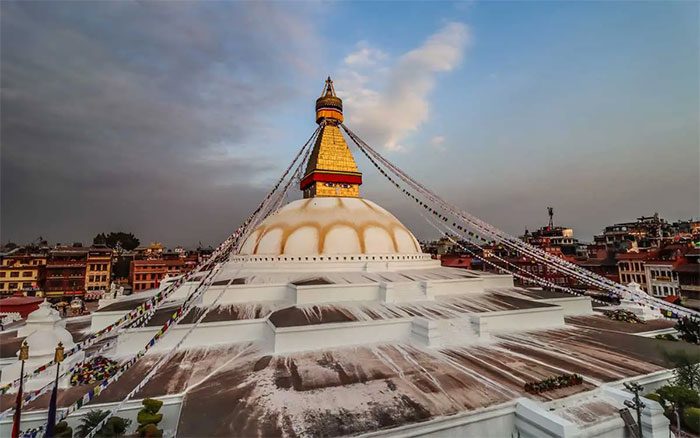
Boudhanath Stupa resembles a mandala.
- Eyes: The four huge eyes looking in four directions of the tower are the eyes of the Buddha, symbolizing wisdom and the ability to see all.
- 13 tiers: There are 13 stages that one must overcome to achieve enlightenment, and the 13 tiers symbolize those stages. The overall shape forming the 13 tiers is triangular, symbolizing fire.
- Lotus: Symbolizes personal growth, enlightenment, and purity as it grows in muddy waters yet remains beautiful. The lotus represents enlightened beings like the Buddha and Bodhisattvas.
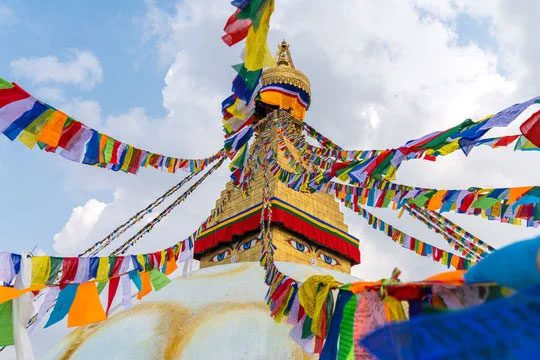
The top of the stupa symbolizes Mount Meru, known as the king of mountains.
- Prayer Flags: The fluttering flags in the wind are believed to carry mantras and prayers. The flags are of five colors with distinct meanings: white (symbolizing purity, primacy), blue (symbolizing peace, protection from harm), yellow (symbolizing beauty, wealth), green (symbolizing knowledge, awakening/enlightenment), and red (symbolizing love, compassion).
- Umbrella: Considered a protective symbol of the Three Jewels. Just above the umbrella is a canopy, which symbolizes space.
- Stupa Pinnacle: Represents Mount Meru, a mountain in ancient Indian mythology, also known as Sumeru. In Buddhist belief, Mount Meru is the king of mountains, the center of the world, and the cosmology of Buddhism.
Spiritual and Cultural Significance
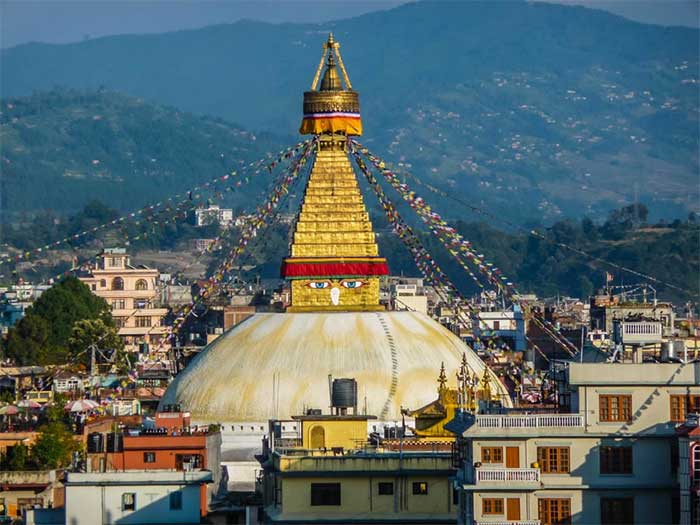
In 1979, Boudhanath Stupa was recognized as a UNESCO World Heritage Site.
Boudhanath Stupa holds significance as a cultural and spiritual landmark in Nepal. For millions of Buddhists around the world, it is a popular pilgrimage site where they can connect with the teachings of the Buddha, meditate, chant mantras, or reflect on life.
Boudhanath Stupa also serves as a reminder of the Buddhist concept of impermanence. It has undergone multiple reconstructions and renovations over the centuries, and it was severely damaged in the 2015 earthquake. Despite these changes, the stupa remains a powerful symbol of Buddhism and a testament to the impermanence of all things.
Boudhanath comes alive during Buddhist festivals such as Losar (Tibetan New Year) and Buddha Jayanti (Buddha’s Birthday), which are among the most significant celebrations. During these occasions, the stupa is adorned with colorful prayer flags and illuminated with lights. Monks and Buddhists gather to chant and perform rituals, creating a joyful and sacred atmosphere.
Moreover, Boudhanath is a magnificent architectural structure, regarded as a masterpiece of Buddhist architecture. The influence of the stupa extends beyond the realm of religion, serving as a vibrant social hub where people come together to pray, meditate, and interact. The bustling market surrounding the stupa fosters a sense of community, attracting both tourists and locals, creating a harmonious blend of cultures and traditions.
For Nepal, Boudhanath stands as a cultural treasure, a testament to the deep-rooted values and heritage of the country. The stupa is a place of immense spiritual significance, symbolizing peace, harmony, and unity. It is no wonder that Boudhanath is considered one of the most important cultural sites in the world.








































